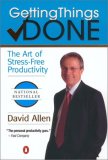Undefined terms can ruin your plans or derail your project.

more funny cats
Undefined terms can ruin your plans or derail your project.

more funny cats
I’m in Chicago with LotStreetWiz. We are both taking a time management course called the GTD Roa dMap, given by David Allen, who wrote the books Getting Things Done and Ready for Anything.
dMap, given by David Allen, who wrote the books Getting Things Done and Ready for Anything.
The flagship of the GTD (Getting Things Done) seminar series, The RoadMap defines the game and helps you jump into it at a new and expanded level. This lively one-day workshop features David Allen live and in-person as he examines the core principles of productivity improvement, then provides you with a unique opportunity to develop your own specific and immediate action steps to implement them.
GTD l The RoadMap provides black-belt techniques for gaining control of the day-to-day, tools for achieving alignment and balance by viewing your world from the appropriate horizon of your commitments and the master key to getting motivated to overcome resistance and move forward. Essentially the Roadmap will provide you with your own internal GPS reading, so at any time you can identify where you are and what you need to do to get on your game and get going.
For those who are new to GTD, The RoadMap provides high-level overview and introduction to a lifelong set of best practices for staying clear, focused, and in control. For those who have already had experience with GTD in some fashion, it will take you for a spin around the block with the basics and inspire you to a new level of implementation (there are no “beginner” moves in the martial arts).
You’ll benefit from:
…decades of in-the-trenches research on achieving relaxed productivity, plus a wealth of up-to-the-minute tips, tricks, and best practices compiled from the whole David Allen Company team (applying GTD material currently with leading-edge individuals and organizations). Collaborate with David in designing your own action plan to keep you winning at the game of work and business of life.
You’ll learn:
You’ll have an opportunity to:
Contents include :
Participants can expect to leave the seminar with enhanced freedom and energy, knowing that their busy lives are indeed manageable, inspired to enjoy life and work at a new level of effectiveness.
Hours: 9 to 5
 It’s not enough to measure: you must know what you’re measuring and why it’s appropriate. You should be able to explain why it’s appropriate.
It’s not enough to measure: you must know what you’re measuring and why it’s appropriate. You should be able to explain why it’s appropriate.
Ideally, when you’re making a choice for a project, you lay out the desired results and the criteria by which you are judging, and the decision is firm that when competing solutions are evaluated, the one that fits the criteria best will be chosen.
Unfortunately, that’s not how governments work. They run the tests or consult their consultants and then pick the one they wanted in the first place. Sometimes they even falsify the data or dictate the conclusions of the report—or simply refuse to publish it. Or, as happened here, they seem blissfully unaware of what’s really important. Ed Darrell reports… how the U.S. National Education Library got new staff.